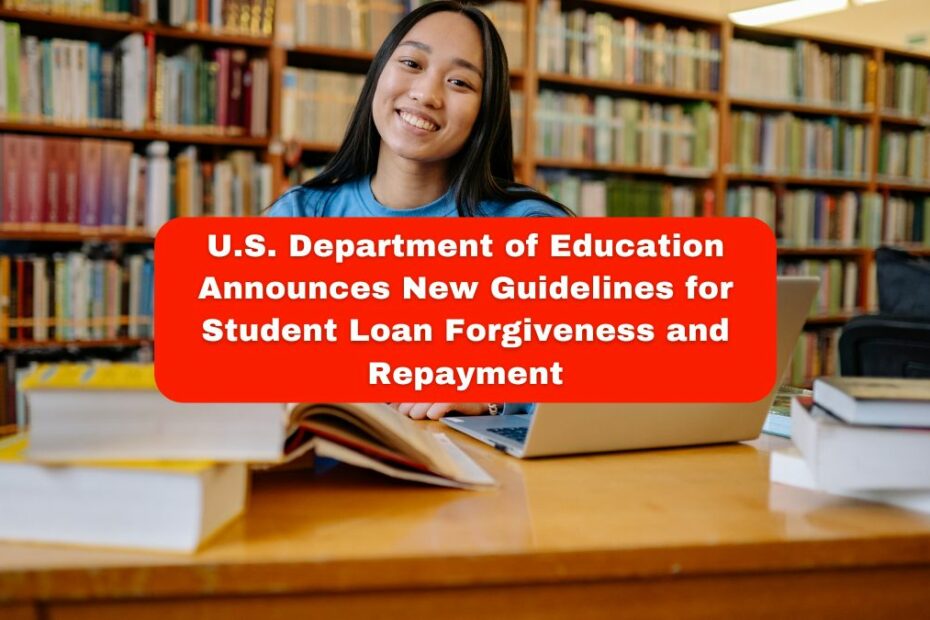Student loan forgiveness is a program where the U.S. government helps people pay off their student loans, and sometimes cancels part of the loan. New rules have been introduced to make it easier for some borrowers to manage their loans. This article will explain what these new rules mean, who can benefit, and how to apply.
What Is Student Loan Forgiveness?
Student loan forgiveness is a government program that reduces or even eliminates student loan debt for qualified borrowers. The U.S. Department of Education has introduced new guidelines that change how repayment and loan consolidation work under this program.
New Guidelines for Student Loan Forgiveness
The U.S. Department of Education has issued new guidelines to help borrowers better manage their student loans. These changes include updates to income-driven repayment plans, loan consolidation options, and other forgiveness programs.
If you’re already enrolled in the new SAVE (Saving on a Valuable Education) plan, your monthly payment may be recalculated soon. Payments could start this month or next, and any pause in payments (forbearance) will end by next month.
Key Changes: Repayment and Consolidation
Here’s a quick look at the main changes:
| Feature | Old Terms | New Terms |
|---|---|---|
| Income-Driven Repayment Plan | Payments based on 10% of income | Payments reduced to 5% of income for undergrads |
| Loan Forgiveness Timeframe | Balance forgiven after 20-25 years | Balance forgiven after 10 years for loans under $12,000 |
| Eligibility for Reduced Payments | Income less than $32,800 (single) or $67,500 (family of 4) | Same income limits apply |
| Loan Consolidation | Multiple loans combined into one with fixed rate | Same, but some benefits like loan cancellation may be lost |
Who Is Eligible for Student Loan Forgiveness?
About 30 million Americans could benefit from these changes. However, there are specific qualifications you need to meet:
- Repayment History: Started repaying loans before July 1, 2005, or have graduate debt from before July 1, 2000.
- Income: Low or middle-income borrowers facing financial hardships.
- School or Program: Attended a school or program that didn’t provide sufficient value.
For more detailed eligibility criteria, check the official government website.
How to Apply for Student Loan Forgiveness
If you think you qualify, here’s how to apply:
- Submit an Application: Fill out and submit your application along with a temporary expanded PSLF (Public Service Loan Forgiveness) certification to your loan servicer. A help tool is available on the PSLF website.
- Annual Certification: Submit the form every year. After 10 years of service, your employer will certify the final PSLF form.
- U.S. Citizenship: You must be a U.S. citizen to apply.
- Supporting Documents: Include all necessary documents with your application.
Stay updated by checking the government website regularly.
Other Types of Loan Forgiveness Programs
In addition to student loan forgiveness, here are some other programs:
| Program Name | Who Qualifies | Details |
|---|---|---|
| Teacher Loan Forgiveness | Full-time teachers in low-income schools | Must work for five consecutive years |
| Nurse Corps Loan Forgiveness | Registered nurses serving in high-need areas | Must work in critical shortage areas |
| IDR Loan Forgiveness | Borrowers under Income-Driven Repayment plans | Forgiven after 20-25 years of on-time payments |
For the latest updates, be sure to visit the official government website.
FAQ’s
What is student loan forgiveness?
Student loan forgiveness is a government program that helps reduce or cancel student loan debt for eligible borrowers.
Who is eligible for student loan forgiveness?
Eligibility depends on factors like income, repayment history, and whether you attended a qualifying school or program. Check official guidelines for specifics.
What are the new changes in student loan repayment?
The new guidelines lower the monthly payment for some borrowers and shorten the time to loan forgiveness for those with smaller loans.
How can I apply for student loan forgiveness?
You can apply by submitting an application and relevant documents to your loan servicer, and you must renew your certification yearly.
